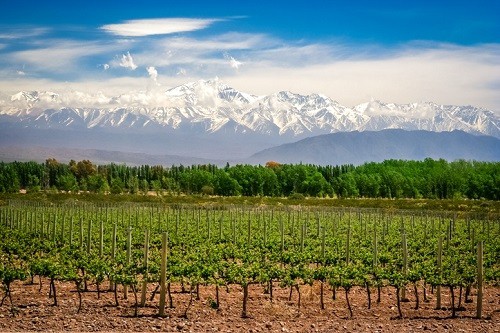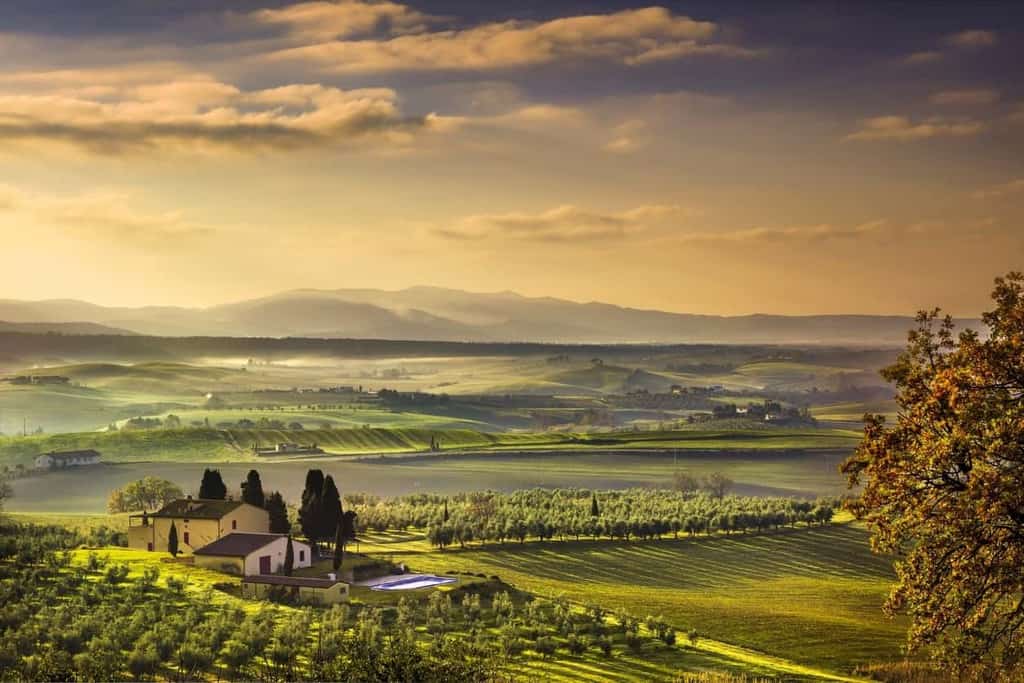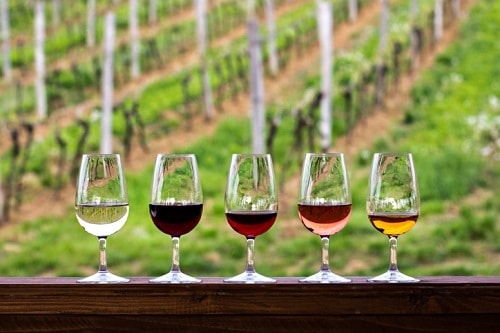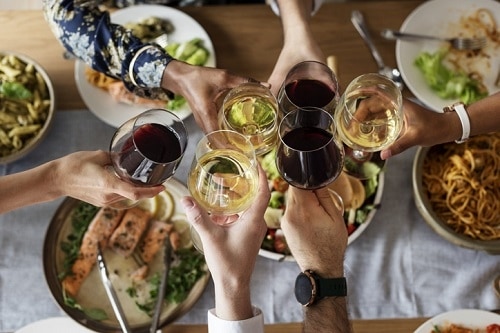As a wine director, my days of slinging bottles every night on a restaurant floor are not what they used to be. While I still get to work the floor a couple nights a week at Chicago’s top steakhouse, Prime & Provisions, most of my time is now spent behind the scenes of all five DineAmic Group restaurants. Often bogged down in meetings pertaining to numbers or networking with industry professionals on business, the wine director position is vastly different than one of a Sommelier. While there are some parts that are interchangeable, it’s important to understand the difference between the two. Surprisingly enough, even industry professionals have a hard time defining the differences.
Essentially, a wine director is one who oversees the wine programs and their main focus is business growth. A Sommelier is a role that is on the restaurant floor serving wine to guests and helping with recommendations. Again, some roles including my own, have areas that include both. One of the areas that includes both is education. Teaching the front line of the service staff about wine is absolutely imperative to a restaurant’s success. Over the years I believe I have perfected the art of teaching beginners about wine, and while it’s much easier to do it over a 90-minute intro course, I have provided the following starting points to help you understand not necessarily what wines you like, but from which regions you like your wines.

Geography
If I could sum up wine in one word, it would be geography. Wine folks like to use the word terroir, which I love, but for the point of making things easy, I’ve found that practically everyone understands the word geography. The most important part of a wine’s geography is its climate. Simply put, hot climates versus cold climates. Imagine you are a plant that produces fruit and if I put you in sunny California versus chilly northern France, what differences would you incur while growing? Would you be riper? Yes, obviously. Would you be bigger? Yes, again. Would you have more sugar from all that sunshine and heat? Yes, yes, and yes.
RELATED: ADVANCED: The Science Behind Growing Wine Grapes
Now placing those exact questions in terms of wine, would you be fruit forward? Yes. Would you be fuller-bodied? Yes. Would you have higher alcohol content? Yes. No matter the varietal these and many other factors all coincide with the region’s climate. In a nutshell, just think hotter equals everything bigger and cooler equals everything smaller. If you are a huge fan of Napa Valley like most of us here at Winetraveler are, chances are you will like wines from similar climates such as Australia, Argentina, and the deserts of Spain. Like Napa, wines from these areas almost always produce fruit-forward, full-bodied styled wines. Applying this approach to the back-end, if you are drinking light bodied wines that boast more of an earthy/mineral drive, chances are they are coming from a colder climate. So, the next time you want to try something new but want something you’re certain will be your style, just imagine the climate of the region you typically like and go to a similar region.
Oak
One of the biggest personal preference descriptors for wine is oaky wine versus not so much or un-oaked wine. While this can be manipulated, as it’s of course a winemaker’s technique, almost always it coincides with again, climate. There are exceptions to this rule (calm down my Somm friends), but for the overwhelming majority of the winemaking world, the amount of oak is directly related to the climate.
READ: The 5 Best Up-And-Coming Wine Regions According to a Sommelier
I always describe oak as the big scary monster in my wine training. It’s aggressive and likes to take over the flavors of wine if given the chance. Reverting back to the body of the wine, would it make sense for a wine to handle big bad oak? It would also have to be big and bad. And where do you find big-bodied wines? If you are thinking, ‘hot climates’ then you are correct. Now it should make sense to you that the majority of wines coming from hotter climates will have oak on them. Again, oak is a winemaker technique, so they can choose to not use it, but we’re talking generalities – if you are buying a wine from a hot climate, there is probably a 90-percent chance you will be tasting oak on it.
It’s the complete opposite for colder climate wines. Usually thin-skinned varietals, these wines are normally more sensitive. Do you think sensitive would enjoy big, bad, scary oak? Probably not, and at least not new oak (oak in its most aggressive form). Are there exceptions to these rules? Of course. But again, an overwhelming majority is true here. So, if you enjoy oaky wines, stick to those hot climates. If you don’t, head to colder climates.
Acid
One contradiction to the “colder-climate-equals-everything-smaller” approach is acid. Acid is the sensation you feel in your mouth when salivation occurs. If you drink a wine that kind of makes you pucker and salivate hard and fast, that is a wine featuring high acid. The opposite goes for hot climates – low acid.
Basically, when a grape begins its growing life it is full of acid. Over the growing season sugar that develops via sunshine and water slowly begins to replace that acid, which means that the more sugar produced, the less acid left over. And what kind of regions produces a lot of sugar? Hot ones! Therefore, we know that hot regions will have less acid than cold ones.
Why is acid important? Two main reasons: First, it’s one of personal preference. I for one love high acid wines (especially white) because it leaves me wanting more and is usually accompanied by a ton of minerality flavors in the wine. Second, salivation encourages us to eat. Like Pavlov’s dogs, the mere thought of food or wine can have someone immediately start salivating, which in turn begs for the addition of food. And as you will read later, wine and food go together like peas and carrots. Acid is important!
Body and Fruit
I remember when I first started learning about wine, people would say, ‘this wine smells/tastes like red raspberries, cranberries, bruised cantaloupe, candied walnuts,’ etc. etc. I was like, “Okay, if you say so…”
I’m not even sure how important it really even is to be able to decipher specific fruit characteristics in a particular wine unless your main goal is education. If you’ve read any of my previous articles, you’ll know I’m in the boat of just enjoying what you like for whatever reason you like it.
I’ve developed a cheat sheet of sorts to help any beginner understand fruit character in the wine. It’s less important that people agree on exact fruits, because what may taste like a blackberry to me might taste more like a black cherry to you. Our palates are different, so it makes sense that we may perceive things slightly different. The important part is to at least be in the same ballpark describing fruit. Naming two black fruits is cool. What’s not cool is if I say blackberries and you say cantaloupes. Something there is drastically off.
RELATED: 10 Red Wine Health Benefits You Should Know About
By using red wine as an example, here’s how the cheat sheet goes: If the body of the wine is light/translucent (you can see through it while in the glass), think light fruits pertaining to the red spectrum: cherries, strawberries, cranberries are all light in color and style. Almost every wine on the planet that you can see through will have these types of fruits present. If the body of the wine is full/opaque (you can’t see through it while in the glass) think heavy/full fruits pertaining to the black spectrum: blackberries, dark cherry, currants are all dark and rich in style. Practically every full-bodied wine will express fruits similar to these.
We can even start to have more fun and tie this into oak with this concept. Will the bigger, darker, richer fruits be able to handle big, bad, scary oak? Yup! Will the lighter, more sensitive red fruit versions prefer to be left alone? Again, yup! Once more though, note that these concepts apply to an overwhelming majority of wine, not necessarily 100% of wine.
Pairings
Pairing food with wine is always a hot topic and often fought about among sommeliers. I’ve been to enough wine dinners to hear just about every criticism on the planet. Trying to practice what I’m preaching in this article, I’ll break it down as simple as I can for you. It’s more about what NOT to pair with food and wine. Is there a perfect pairing for any particular dish? I suppose there could be, but my point is there are a ton of really good/non-offensive options when pairing any dish. This will make your non-stuffy sommelier’s life much easier when attempting this feat. Below are some simple tips to remember when pairing:
Light dishes like a light wine. Heavy dishes like heavy wine. Sound simple enough? Light dishes include seafood, salads, fruits, and veggies. Lighter wines will complement essentially anything that has a light feeling in your mouth. Any dishes that feel heavy in your mouth; steak, rich kinds of pasta, heavy cheeses will all benefit from fuller bodied wines.If you like white wine with your steak, go for it. Just stick with a heavier style like Chardonnay or Riesling from warmer climates. If you like red with your salad, do it! Just stick to lighter styles like Pinot Noir and Sangiovese from cooler climates.
- Hot/spicy foods are wines worst nightmare. Only two elements of wine handle spicy food well; low alcohol and/or sugary wines. Look to cold climate wines or wines that throw in a lot of residual sugar, like Riesling and Vouvray.
- Highly tannic wines such as Barolo, Brunello, and big, age-worthy Cabernets can be tricky when pairing. They all need something big to stand up to, like red meats or heavy kinds of pasta. Keep in mind that tannin (that drying sensation wine gives you) is intense, so you will also need intense food to hold up to the wine.
- When in doubt remember acid. High acid wines love food and vice versa. And where do the high acid wines come from? Colder climates. Areas like Champagne and even most European wines tend to be cooler climates, making them higher in acid and ideal to pair food with.
RELATED: How To Pair Wine With Sushi
RELATED: How To Pair Bordeaux Red Wines With Food
Bottom line: drink what you like, with what you like, from where you like. There are no hard and fast rules when it comes to personal preferences and individual palates. But if you’re interested in learning about wine, its characteristics, geography, or even the winemaking behind the wine, then by all means, dive in. It’s a fascinating art and one that will only give you a greater appreciation for what’s in your glass.


